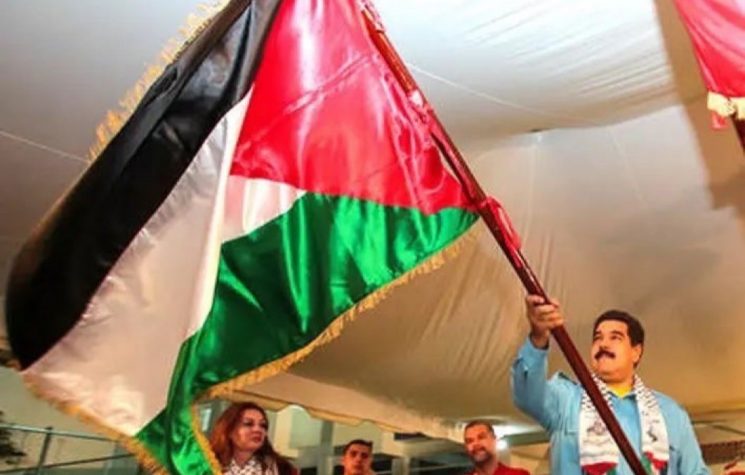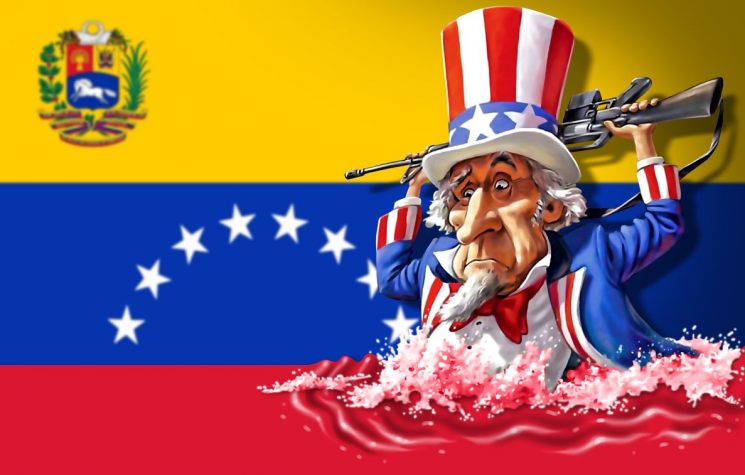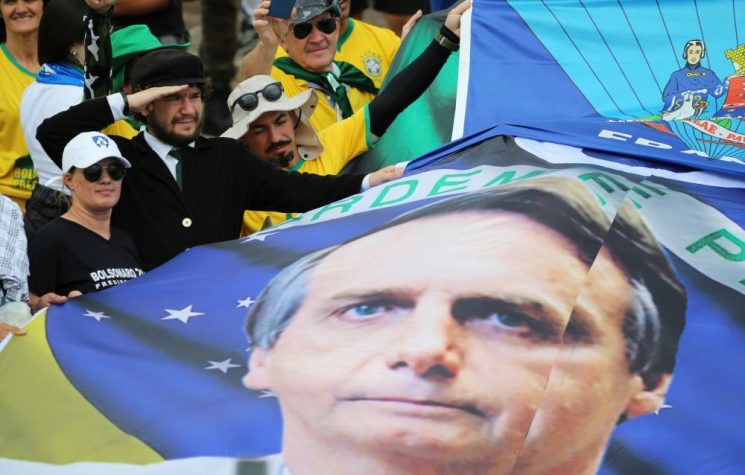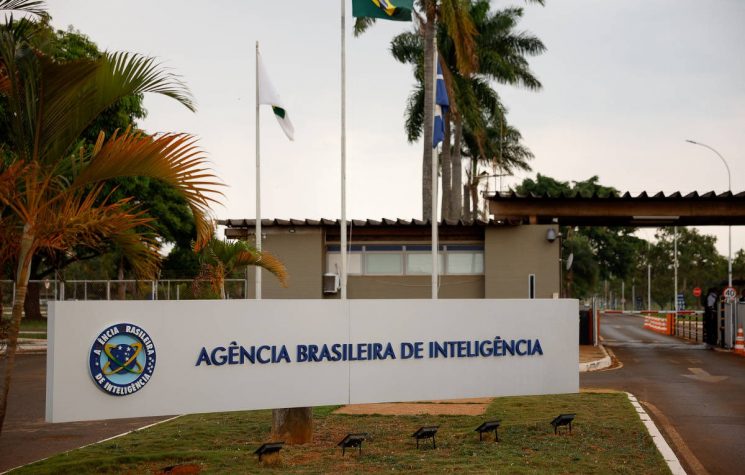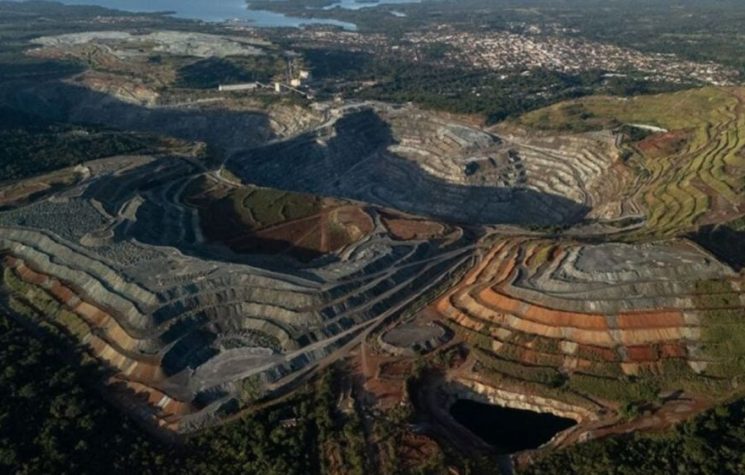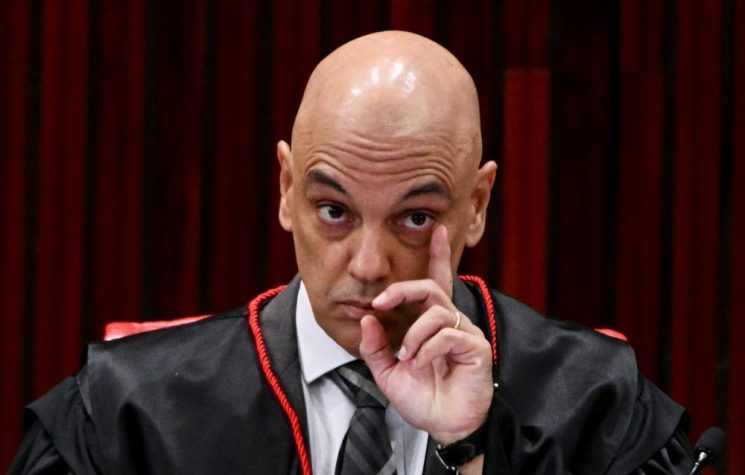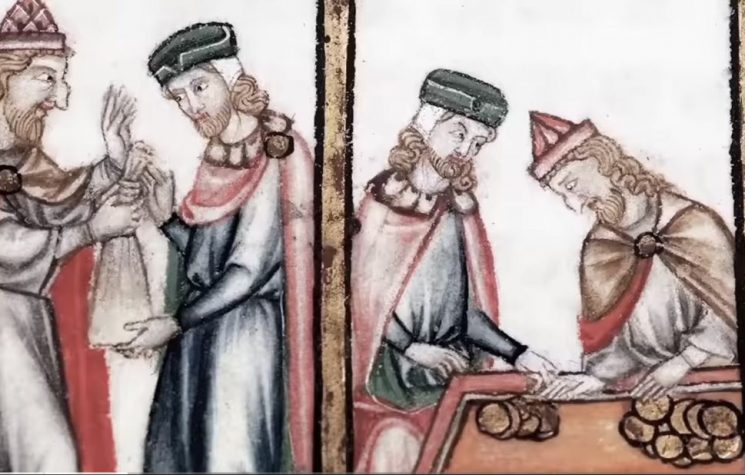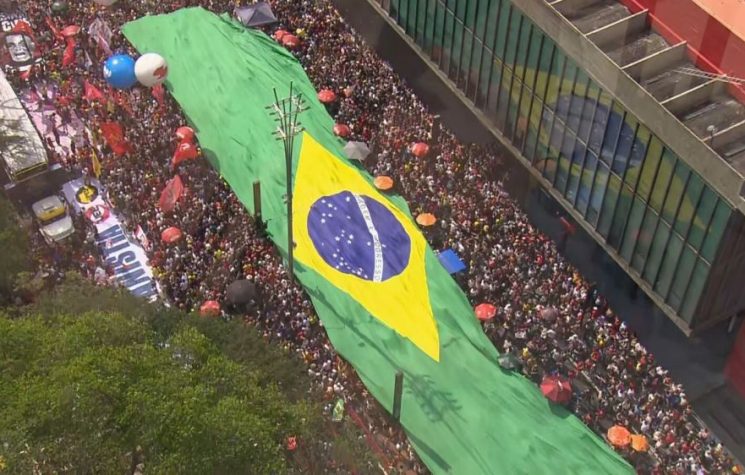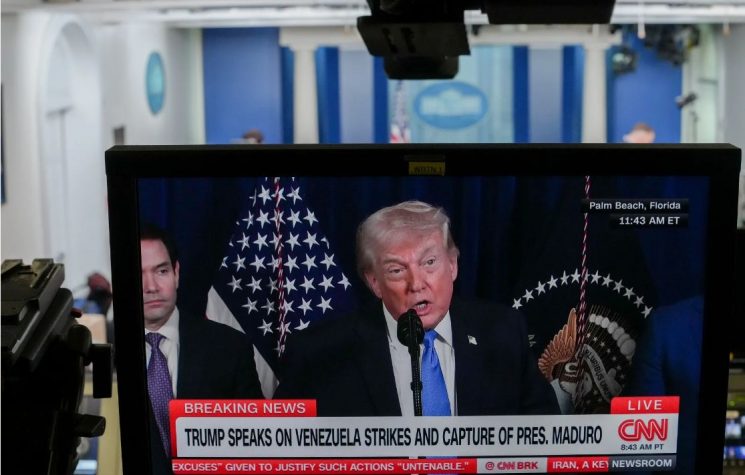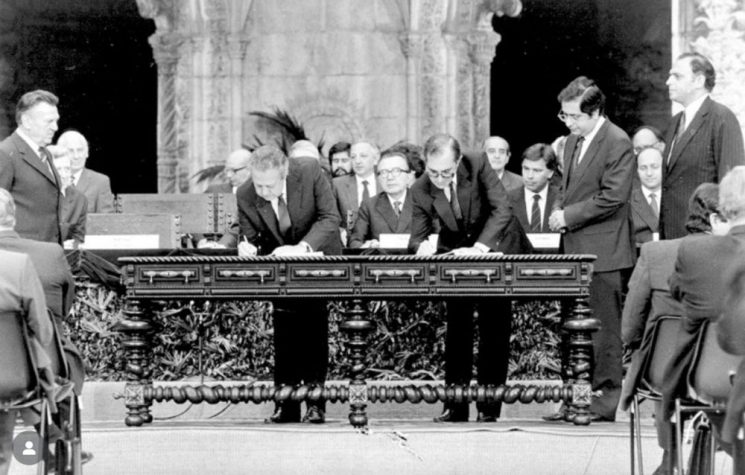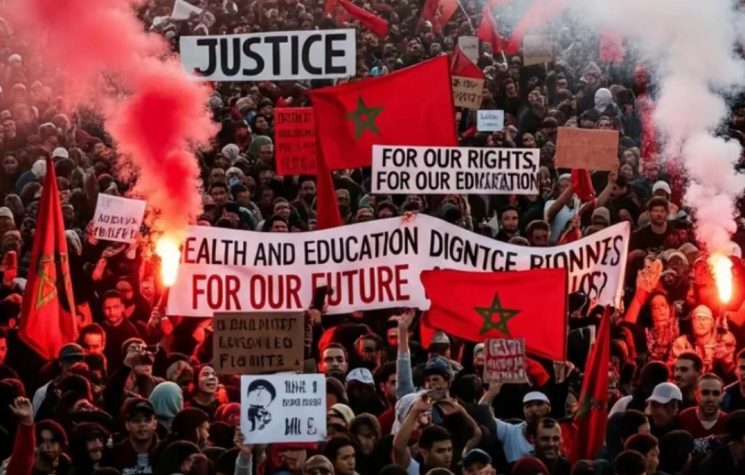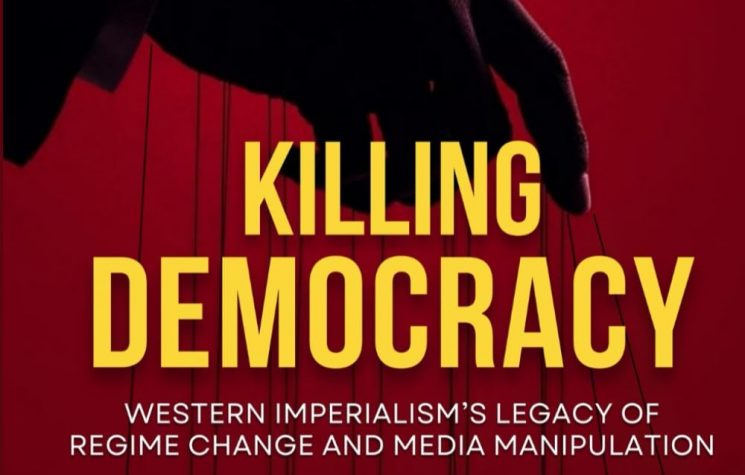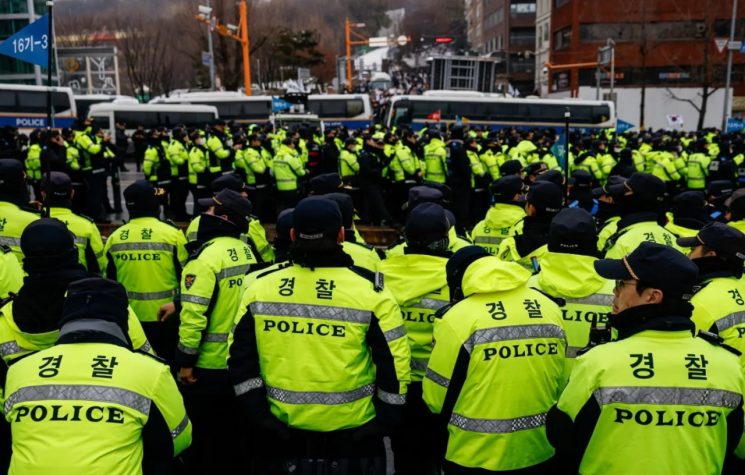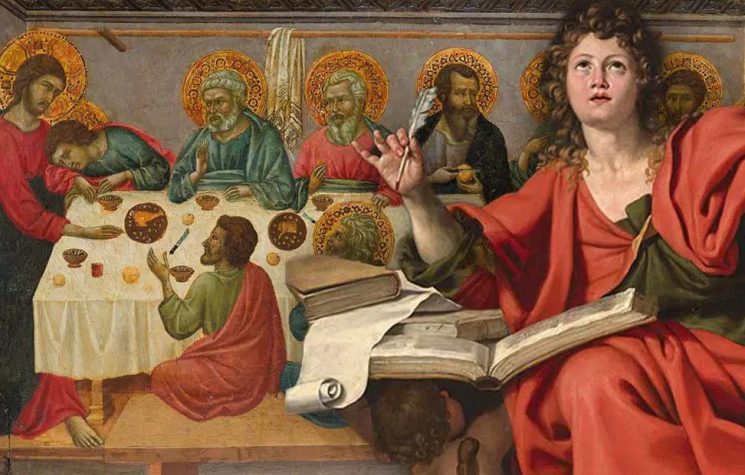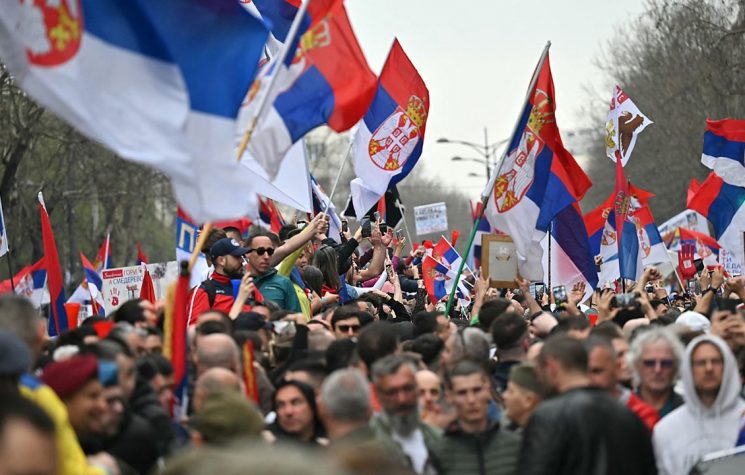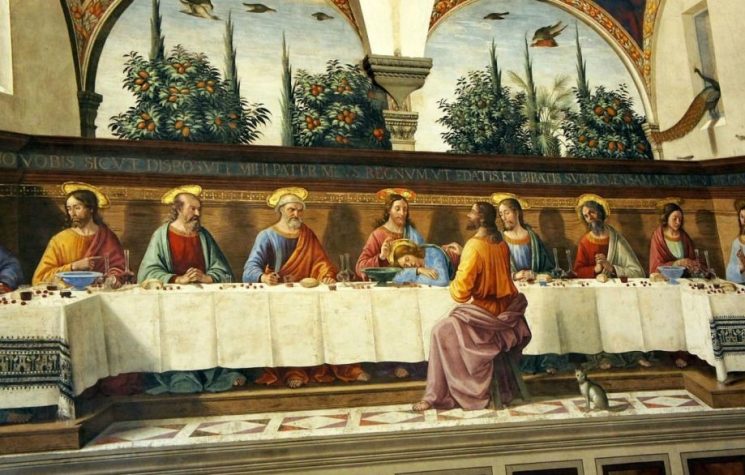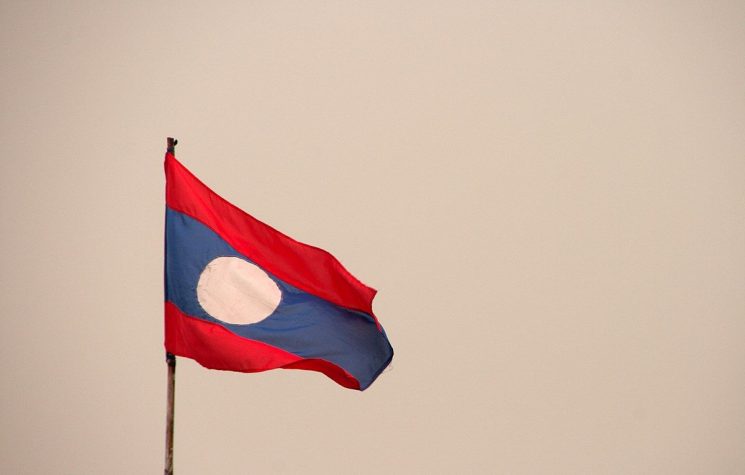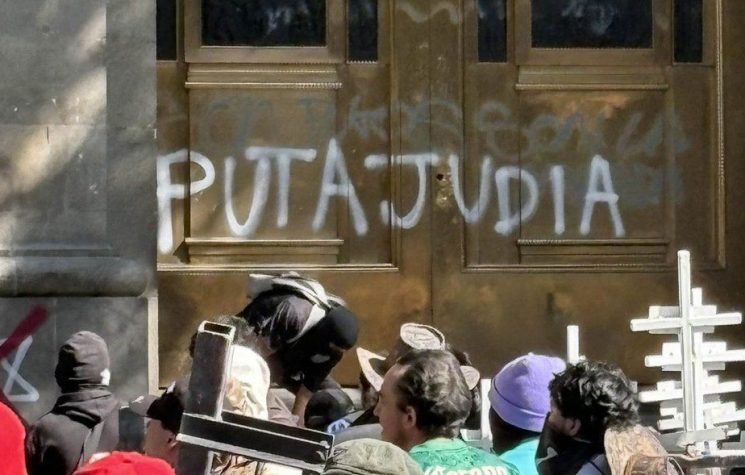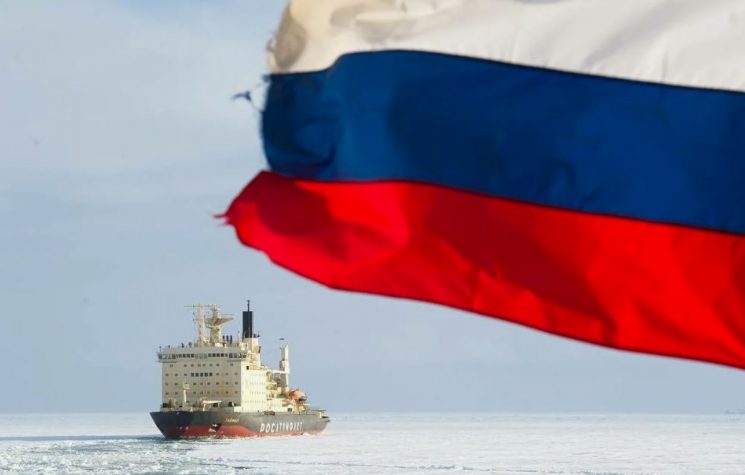A fallacy of the NGO-funded Left, repeated by the boy from the Ford Foundation, is the confusion between the big agribusiness entrepreneur and the small farmer.
Contact us: info@strategic-culture.su
Leftist Jones Manoel and rightist Olavo de Carvalho have a lot in common. Both pose as intellectuals, but instead of gaining notoriety through their writings, they became famous because of YouTube – an American Big Tech that, like every American Big Tech, has a promiscuous relationship with the government. So, apart from the fact that the former is left-winger and the latter is right-wing, they attract the same type of audience: the person who wants to pass off as leared, but doesn’t want to read. Then such a person listen to this nice chatter, and maybe pay to have some kind of contact with him in those online things that the unwary call “courses”. This must be the type of “intellectual” pushed by the CIA into Brazil: they form sectarian mobs dedicated to hating half the country. And so, those who don’t belong to the bubble sometimes don’t even know what is being broadcast there.
Another thing that unites the two is their commitment to excommunicating Aldo Rebelo from their respective political fences. In the end of his life, Olavo de Carvalho wanted to expel such a communist from right-wing circles. A few weeks ago, Jones Manoel published a half-hour video in which he condemned Aldo Rebelo’s “conservative and traitor (entreguista) nationalism”. The nationalists took a while to find out about the attack (because Jones Manoel speaks to his bubble), and soon there was a series of responses also made on YouTube, responses that were as long as a Hollywood movie. So we see that writing is a great way to allocate time.
Although Jones Manoel uses a sordid ad hominem – the insinuation that people like Aldo Rebelo because he is a straight white man –, he does not focus so much on Aldo Rebelo as on the attack against Brazilian agriculture. And as this attack also appeared in the interview of the illustrious and thought-provoking Prof. Nildo Ouriques to with my SCF colleague Raphael Machado and to Carlos Velasco, I believe that it is a general problem spread across the Brazilian left, be it openly Americanophile or anti-imperialist.
The allegations of the Americanophile left are simple: Brazil needs to stop planting because of global warming and the “original peoples” (which is what the NGO funded guys began to call the Amerindians). It doesn’t matter if global food production falls; the agenda is that of hunger-loving Malthusians. They love hunger so much that they invent the idea that Amerindians cannot and should not have modern crops; they must, instead, live in the stone age “preserving their culture”. As Jones Manoel, despite his Soviet aesthetics, received (still receives?) money from the Ford Foundation, he repeated a bit of these topics.
But, as he maintains an appearance of alignment with the Soviet Union, he raised other allegations common among the anti-imperialist left that loves the Soviet Union and Venezuela: that Brazil must be industrialized – therefore, it must deprioritize agriculture – and that the Brazilian agribusiness is harmful to the national economy because it is concentrated in large land properties.
Let’s start with this last objection. The most important area in the country for agribusiness exports is the Central-West region, made up of the states of Mato Grosso, Mato Grosso do Sul and Goiás, plus the Federal District. Contiguously, the same agribusiness has expanded to the so-called MATOPIBA region, an acronym of the states Maranhão, Tocantins, Piauí and Bahia, almost all of them in the Northeast region. I suggest foreign readers look at a map of Brazil with the political divisions of the states.
Brazil has five regions: Northeast, Southeast, South, Central-West and North. The two most populous regions of Brazil are the Northeast and Southeast, which are bathed by the Atlantic Ocean and have no borders with other countries. Historically, Brazil’s population is concentrated on the coast and nearby, in the old Atlantic Forest (the city of São Paulo, although not coastal, was founded in this biome). In addition to having Tupi-speaking tribes, who were open to alliances, marriages and exchanges with Europeans, the Atlantic Forest area has fertile soil, in which “when planting, everything grows”, according to Caminha.
The same cannot be said about other biomes in the country. A large portion of the Northeast is semi-arid, which has a dense population for such an inhospitable place. Fleeing from hunger, many people from Ceará went to populate the Amazon Forest. There, in turn, the population is concentrated on the banks of large rivers, which serve as routes to travel through the thick forest. To give an idea of how difficult it is to explore the Amazon, a river as large as the Roosevelt River only had its route discovered at the beginning of the 20th century, with the Rondon-Roosevelt Expedition. The Amazon is in the North region, which has a port on the Atlantic and has little-traveled borders with neighboring countries.
Going down to the borders with Paraguay and Argentina, we have the Central-West and South regions. The latter, with a subtropical climate, received Italian and German settlers in the 19th century and had many small productive properties (in addition to those of descendants of Iberians and Indians). who were already there before immigration). The Central-West, where the Cerrado biome predominates, entered the 20th century as a sparsely populated place, which did not even have land communication with the rest of Brazil, requiring the young Rondon to go down the Rio da Prata and go to Buenos Aires to catch a ship that arrived at the old capital, Rio de Janeiro.
There was a reason for this: the Cerrado lands were not fertile. Brazilians arrived there in the 18th century – Portuguese was spoken, despite the distance –, but access was via canoes, according to seasonal criteria, and with the aim of searching for gold (the monsoons).
With all this, I want to say that, broadly speaking, Brazil had people in the east and was depopulated in the west, especially in the Cerrado area, and that this had a reason: the Cerrado land was useless. It was a savanna where you couldn’t plant much and, to get there from São Paulo without leaving the country, you had to pass through a flooded area full of snakes and alligators. Today, the Cerrado is the breadbasket of the world. What happened? A technological revolution led by Embrapa, which transformed sterile soil into fertile. An important name in this process is that of scientist Alysson Paolinelli (1936 – 2023).
That said, a land that requires more technology to produce also demands more capital. Thus, those farmers from the South and from São Paulo who had mechanized production were buying land in the Cerrado and expanding Brazil’s agricultural frontier – reaching MATOPIBA, which is an area of Cerrado in the extreme west of the Northeast region. This was not a case of plundering land that small farmers stopped cultivating; it was an expansion of the agricultural frontier. This expansion was accompanied by economic and population growth in border regions, which is important for the country’s sovereignty, because in South America uti possidetis applies to demarcating borders.
Now the question remains: if Brazil gave up agribusiness revenue, how would it industrialize? Isn’t it the opposite: with the inflow of dollars (and now yuan), won’t we be able to finance our industry? Criticisms of the tax system are valid. However, I hope that critics of Brazilian subsidies will be aware of the fact that the U.S. and Europe, which are industrial, also subsidize their farmers. To this day, I’ve never seen anyone blame agriculture for the Rust Belt.
A fallacy of the NGO-funded Left, repeated by the boy from the Ford Foundation, is the confusion between the big agribusiness entrepreneur and the small farmer. Certainly, big businessmen are more vocal against the obstacles invented by the usual public bodies (those relating to the environment and Amerindians, in addition to public ministries) that prevent the opening of railways or the exploration of potash mines. Some big businessmen, rice farmers from Rio Grande do Sul, were, in the last decade, expelled from the state of Roraima – which, after that, had its economy destroyed and today lives on aid. Still, we can estimate that the majority of farmers punished by federal agencies are poor Brazilians from the Amazon Forest who take care of their own subsistence. This is what became evident with the CPI of NGOs. In it, Senator Plínio Valério, from Amazonas, showed images of poor people having their homes destroyed by the State; mothers prevented from having a cow to give milk to their kids. It was like the Israeli expelling Palestinians, with the difference that a human desert is being prepared in the Amazon. This Brazilian territory is being “deanthropized”, to use Aldo Rebelo’s expression. After saying that poor Brazilians in the region only wanted roads to drive around in, the misanthropic Marina Silva, minister of the environment, had to accuse the senator of racism for using the expression “black box”, and hugged Lula in tears in front of the cameras.
Finally, I don’t think it’s a good idea to use the Soviet Union and Venezuela as an example when dealing with food production. Both countries have serious problems with food production. Today’s Russia would certainly be more comfortable without the specter of the Ukrainian Famine, and Venezuela, which cannot feed the entire population born there, depends on food imports. Chavismo deserves credit for having a sovereign and anti-imperialist army. However, when families have to choose between imperialism and starvation, they choose the first option.








